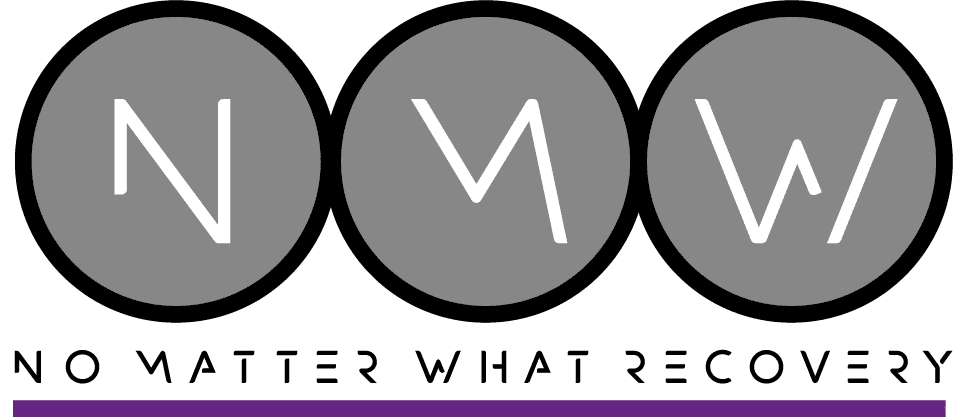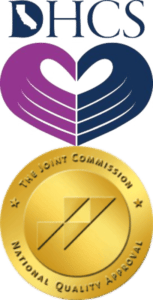How to Help Prevent and Treat Substance Abuse
Table of Contents
According to the Substance Abuse and Mental Health Services Administration, approximately 17.2% of adolescents, or minors between 12 and 17, used or tried some type of illegal substance within the past year. Young people who use illicit substances have a higher risk of going on to develop substance abuse disorder in adulthood.
However, potential addicts or alcoholics are not just teenagers. People can recieve education about the impact of drugs and alcohol at any stage of life. This is because addiction can occur during any point in a person’s life. It is important to learn about the dangers and impact of substance use and abuse at any age. Prevention and treatment are key for preventing drug use.
In many cases, it may not take as long as many people think to go from simply trying a dangerous substance to using it regularly. Within just three years of trying marijuana, alcohol, or hard drugs for the first time, many people will go on to start using that substance regularly. Providing effective education on both drugs and alcohol and mental health coping strategies can help many potential addicts avoid falling into that trap.
Video: How Does Drug Addiction Start?
How to Teach Someone About Drug and Alcohol Abuse
Drug and alcohol abuse continues to start increasingly early. That means that an early intervention, primarily through education, about those dangerous substances may be needed to decrease the risk of addiction and substance misuse.
Alcohol use, in many cases, starts before 12, and adolescents may try marijuana for the first time at an average of age 14. Proper education, however, can empower adolescents to say no and increase the odds that they will be able to avoid those dangerous substances.
- Acknowledge the fact that mental health is as important as physical health
- Acknowledge the fact that mental illness is as real as physical illness
- Be empathetic with those who seem troubled, even if you do not fully understand the way they are feeling
- Do not demean or stigmatize those who seem mentally ill for that illness
- Always approach those who may need help with empathy first
In short, the first step toward understanding is empathy. The stories we hear about mental illness are often wrong, exaggerated, or incomplete. Always approach others with respect and an understanding that you do not fully know their story.
1. Start early.
Young children, including children as young as 10 or 11, may need to know the potential consequences of drug and alcohol addiction. This is particularly true of children and adolescents with underlying mental disabilities, including ADHD.
Have age-appropriate conversations about drugs and alcohol as they get older, providing them with more information about the challenges related to drug and alcohol abuse and how they can best navigate those challenges.
2. Avoid scare tactics.
Many people jump in with the darkest facts about drugs and alcohol: the risk of overdose, the odds of addiction, and how drugs can ruin your life. Many potential addicts, however, will struggle to place the full weight they should on those negative experiences.
Not only are they often seeking those highs, their brains may weigh positive experiences more heavily than negative ones. They may assume, “It won’t happen to me!” or, “Well, those are the worst addicts; I can avoid that!” Unfortunately, all too many people find themselves struggling with addiction and self-control before they even notice the early signs and symptoms.
Avoid scare tactics. Instead, offer an honest look at what drug and alcohol abuse does over time. Discuss how even a single use can start an addictive spiral. Offer honest information in an age-appropriate way in order to encourage the best decision-making.
Loved ones should complete research and make sure they are able to give the addict or potential addict facts. In many cases, they may know more than you do about the immediate effects of drugs and alcohol, especially if they have peers who may already be using dangerous substances.
3. Offer real-world experiences where possible.
The reality is that most potential addicts are savvy. They know that you’re likely to use statistics to try to talk them out of doing something they want to do, including trying drugs and alcohol.
They may also recognize the scare tactics often used in anti-drug and alcohol campaigns across schools or media. Real-world examples may also help give potential addicts a better idea of what to look for in themselves and their friends or family.
4. Provide potential addicts with strategies for avoiding drug use.
People may start using drugs and alcohol for any number of reasons. Often, potential addicts give in to peer pressure. They may not have a solid plan for getting out of a situation where they’re being pressured to try drugs or alcohol, which may make it more difficult for them to say no. Problem-solving to help potential addicts find solutions that can help them get out of those dangerous situations.
5. Listen.
One of the most effective teaching strategies is genuinely listening to what a potential addict has to say. Many people have already had an experience with drugs or alcohol, or know someone who has. They may already have stories to tell. Listen to what they have to say and incorporate that information into your discussions about drugs and alcohol.
Sometimes, a potential addict may be savvier about drugs or alcohol use than loved ones think. In other cases, they may need to talk about the challenges their friends may have faced. Loved ones may discover that opening a conversation about drug and alcohol abuse uncovers the fact that the person already has a friend struggling with addiction.
Do not just listen to what the potential addict has to say about drug and alcohol use or abuse, either. Take the time to listen to what they have to say about their goals and plans for the future. In many cases, loved ones will find that it will improve the potential addict or addict’s understanding of how drug and alcohol abuse could derail their ability to pursue their goals.
6. Provide healthy coping strategies and mental health support.
A huge part of avoiding drug and alcohol abuse is ensuring that people have adequate resources to help them cope with mental health challenges. Many people will try to self-medicate in an effort to deal with anxiety or depression. Often, they turn to drugs and alcohol to improve those devastating symptoms, especially as conditions drag on or stress rises.
Unfortunately, many people may not have the resources they need to treat and manage those conditions. As a result, they may turn to illegal drug use or overall substance abuse in an effort to decrease those feelings. Talk therapy and even prescription medication can often help, especially if the person has an identified disorder that they need to handle. It’s important, however, to also discuss healthy coping mechanisms and strategies that can help decrease feelings of depression, anxiety, and mood disorders.
Engaging in exercise releases a flood of endorphins and contributes to a greater sense of wellbeing. While studies show that exercise does not treat anxiety as effectively as prescription medications, it can have a huge impact on overall mood. Exercise may help take a person’s mind off whatever worries weigh them down for a period of time as well as improving overall confidence and providing them with positive actions they can take to ward off depression or anxiety.
Often, getting out in nature can help reduce symptoms of depression or anxiety. Disconnecting from social media and smartphones may also have a profound impact on overall mental health. Encourage potential addicts to take that vital time to disconnect, whether that means taking a walk in the park, walking around the block, or just hanging out in the backyard.
Talk therapy can go a long way toward helping people manage symptoms of depression and anxiety. Talk therapy with a trusted therapist can help with improved coping mechanisms. However, in many cases, people will find that they benefit almost as much from talking with a trusted friend or family member.
Creativity can go a long way toward helping stave off mental health challenges. Throughout the early days of the pandemic, particularly when dealing with high levels of isolation, many people found that working on creative projects went a long way toward helping them cope with many of the mental health challenges they may have faced.
Encourage a loved one to find a creative pursuit that helps them. It does not have to be something that they are particularly good at. It is more important that the project they are working on brings them joy. Encourage them to try out music, journaling, dance, art, writing, or any other creative pursuit that appeals to them.
Meditation and mindfulness, including religious prayer, can help many people cope positively with mental health disorders, including depression and anxiety. Often, people in modern society, including adolescents, struggle to turn off distractions and engage with the world around them. Prayer and meditation can help reduce symptoms of depression and anxiety and help many people more confidently deal with their symptoms.
Encourage a loved one to find a creative pursuit that helps them. It does not have to be something that they are particularly good at. It is more important that the project they are working on brings them joy. Encourage them to try out music, journaling, dance, art, writing, or any other creative pursuit that appeals to them.
Signs and Symptoms of Addiction
Signs and symptoms of addiction may vary dramatically from one person to the next. Carefully identifying common symptoms, however, can make it easier to get treatment for people who may be struggling with addiction.
- Common signs include:
- Sudden change in interests, including a lack of interest in things that once seemed to bring an immense amount of joy or were once an important part of the adolescent's life
- Increased agitation or violent behavior
- Hallucinations
- Failing to take care of the physical condition. Patients struggling with addiction may appear unclean or unkempt, or may have a distinct body odor
- Changes in sleep patterns
- Obsessive behaviors
- Worry about where the next dose or high might be coming from
- Stealing money or possessions
Addressing symptoms of addiction should occur as soon as possible. Many of the signs and symptoms of addiction may also look like symptoms of depression or anxiety. In either case, however, potential addicts should receive treatment from a professional as early as possible to help decrease those symptoms and make it easier for them to recover.
Long-term addiction can have serious health consequences, and failure to address both the addiction and any underlying health concerns can have severe ramifications for the adolescent.
Addiction Prevention Resources
Prevention and education are essential for combating substance use disorder. There are many resources available that can help loved ones find information about prevention. Prevention can be helpful in instances where parents or other loved ones want to redirect the potential addict’s behavior. It is important to understand and learn healthy coping skills. Through learning healthy coping skills, people can potentially avoid the cycle of addiction.
Mental Health Resources
Coping with mental health challenges in a healthy and effective way can help people in crisis avoid using drugs and alcohol. There are many resources available to help people manage their mental health.
These resources can help provide education, support, and help:
- How to Cope with Seasonal Affective Disorder
- 11 Tips for Coping with an Anxiety Disorder
- Coping with Depression
- National Substance Abuse and Mental Health Services Administration Helpline
- National Suicide Prevention Lifeline
- Crisis Text Line
In addition, if someone is struggling with mental health conditions, including ongoing depression or anxiety, it can prove vital to receive treatment through a qualified mental health professional.
Reaching out to a primary care doctor or connecting with a qualified mental health professional in the area can help provide vital treatment and support. Treating mental health can be a great tool for preventing substance abuse or use of illicit drugs.
Drug and Alcohol Education Resources
There are additional resource options for people interested in prevention programs. These resources are available to educate people on the potential dangers of drug use and abuse.
Here are some valuable resources that touch on drugs and alcohol:
- The Substance Abuse and Mental Health Services Administration
- Positive Choices
- National Institute on Drug Abuse Lesson Plans and Activities
- The Stand Project
- Drug Free Generation
Reaching out to the local police department or drug and alcohol treatment centers can also make it easier for people to find resources that can help provide support. Treatment centers in particular are great resources for people questioning their patterns of substance use.
It Starts Now
Drug and alcohol use continues to start at an increasingly younger age across the country. Proper education and access to the resources they need can help people deal with the continuing pressures around them as well as providing them with essential mental health support that can help them avoid addiction.
At No Matter What Recovery, we are committed to treating substance use disorder. Our team of professionals are here to support your recovery journey and long-term sobriety. There is always help available to people struggling with addiction.
Contact us today for help if you have a loved one dealing with a serious substance abuse disorder and all the challenges that may represent.
Resources
- Substance Abuse and Mental Health Services Administration. (2021). Screening and Treatment of Substance Use Disorders among Adolescents. Advisory. Publication No. PEP20-06-04-008. https://store.samhsa.gov/sites/default/files/SAMHSA_Digital_Download/PEP20-06-04-008.pdf
- Substance Abuse and Mental Health Services Administration, Center for Behavioral Health Statistics and Quality. (July 17, 2014). The TEDS
- Report: Age of Substance Use Initiation among Treatment Admissions Aged 18 to 30. Rockville, MD. https://www.samhsa.gov/data/sites/default/files/WebFiles_TEDS_SR142_AgeatInit_07-10-14/TEDS-SR142-AgeatInit-2014.pdf
- Center for Behavioral Health Statistics and Quality. (2021). 2020 National Survey on Drug Use and Health (NSDUH): Methodological summary and definitions. Rockville, MD: Substance Abuse and Mental Health Services Administration. Retrieved from https://www.samhsa.gov/data/
- Aacap. (2018, March). Teens: Alcohol and Other Drugs. Teens: Alcohol and other drugs. Retrieved July 14, 2022, from https://www.aacap.org/AACAP/Families_and_Youth/Facts_for_Families/FFF-Guide/Teens-Alcohol-And-Other-Drugs-003.aspx
- Arain M, Haque M, Johal L, Mathur P, Nel W, Rais A, Sandhu R, Sharma S. Maturation of the adolescent brain. Neuropsychiatr Dis Treat. 2013;9:449-61. doi: 10.2147/NDT.S39776. Epub 2013 Apr 3. PMID: 23579318; PMCID: PMC3621648. Turner S, Mota N, Bolton J, Sareen J. Self-medication with alcohol or drugs for mood and anxiety disorders: A narrative review of the epidemiological literature. Depress Anxiety. 2018 Sep;35(9):851-860. doi: 10.1002/da.22771. Epub 2018 Jul 12. PMID: 29999576; PMCID: PMC6175215.
- Any Anxiety Disorder. (2017). National Institute of Mental Health (NIMH). Retrieved July 14, 2022, from https://www.nimh.nih.gov/health/statistics/any-anxiety-disorder
- Carek PJ, Laibstain SE, Carek SM. Exercise for the treatment of depression and anxiety. Int J Psychiatry Med. 2011;41(1):15-28. doi: 10.2190/PM.41.1.c. PMID: 21495519.
- Panza MJ, Graupensperger S, Agans JP, Doré I, Vella SA, Evans MB. Adolescent Sport Participation and Symptoms of Anxiety and Depression: A Systematic Review and Meta-Analysis. J Sport Exerc Psychol. 2020 May 21:1-18. doi: 10.1123/jsep.2019-0235. Epub ahead of print. PMID: 32438339; PMCID: PMC7679280.
- Abi-Jaoude E, Naylor KT, Pignatiello A. Smartphones, social media use and youth mental health. CMAJ. 2020 Feb 10;192(6):E136-E141. doi: 10.1503/cmaj.190434. PMID: 32041697; PMCID: PMC7012622.
- Stuckey HL, Nobel J. The connection between art, healing, and public health: a review of current literature. Am J Public Health. 2010 Feb;100(2):254-63. doi: 10.2105/AJPH.2008.156497. Epub 2009 Dec 17. PMID: 20019311; PMCID: PMC2804629.



